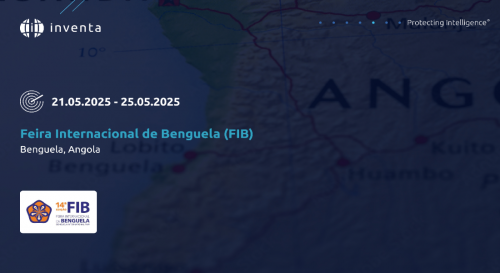
The patenteability of blockchain technology in Europe
Introduction
The blockchain technology gained global notoriety when, at the end of 2017, the value of the cryptocurrency Bitcoin reached the value of $ 20,000. It is usually accepted that this technology arose in 2008 and was created by Satoshi Nakamoto, the fictitious name of a person or a group of people, being implemented in 2009 as a nuclear component of Bitcoin.
Despite it was the exuberant growth of the cryptocurrencies market that caught the attention of people and companies to blockchain, this technology has potential applications that are not limited to that market.
This technology is used in areas such as financial services - for asset management, especially for business processing and settlement; for insurance, in relation to the processing of insurance claims; payment systems, especially cross-border payments - smart property - an area closely linked to the internet of things - smart contracts - for use in healthcare, the music industry and even voting systems.
But what does this technology consist of?
What is blockchain?
Essentially, this technology consists of a block chain, each block consisting of a ledger page or data structure or file. The software on which this technology is based allows the transmission and validation of information through the various blocks of the chain, which are encrypted. Blocks are checked by different participants in the chain and stored in a decentralized way. For this reason, the manipulation of one of the blocks is possible but easily verified by other participants.
As with all technologies, most of the entities that contribute to the evolution of this technology seek to protect their creations. The aim of this article is to consider the patentability of blockchain technology in Europe.
The patentability of computer programs in Europe
Blockchain is a software-based technology. Computer programs appear in paragraph d) of art. 52, no. 2, of the European Patent Convention, 1973, as a subject which can not constitute an invention. However, in 2005 the European Patent Office (EPO) had already granted more than thirty thousand patents related to computer programs and currently computer-implemented inventions are the subject of approximately 35% of European patent applications.
The reason for this lies in the rule laid down in paragraph 3 of that Article, which provides that computer programs, as well as all matters referred to in paragraph 2, shall not be excluded from patentability unless 'European patent application or European patent relates to such subject-matter or activities as such'.
The determination of the limits of the patentability of computer-implemented inventions in Europe is essentially the result of the decisions of the Technical Boards of Appeal (TBA) of the EPO and the interpretation thereof, of the relevant rules.
Although TBA decisions are not binding beyond the instance where they are issued, they are taken as a guide by examiners and other.
In more than 30 years of decisions, TBA have been unable to find a clear criterion for distinguishing patentable computer programs from others. The evolution of the patentability criterion, which began with Case T 208/84 VICOM - Computer-Related Invention of 15 July 1986, has achieved no more than a set of clues and examples of patentable computer programs.
Only inventions can be protected by European patents, an invention being a technical solution to a technical problem. Starting from this premise the EPO distinguishes the software "as such", excluded from the protection, by the absence of technical character. With the conclusion that all software is technical, the EPO has determined that a computer program will not be excluded from protection unless it produces a further technical effect. However, there is no definition of further technical effect. There are such clues and examples.
As indications and / or examples of technical computer programs, not excluded from protection, are usually presented those that implement or ensure:
- value control of a technical process affecting efficiency or safety;
- increase CPU processing speed;
- increase the speed of communication between mobile phones;
- decrease energy consumption;
- decrease the memory usage of a particular device;
- ensure the security of information transmission (information encryption).
On the other hand, non-technical computer programs excluded from protection are those that implement or permit:
- methods of sales, business, and accounting or insurance schemes;
- methods of business administration;
- mathematical methods;
- rules for auction scheme;
- aesthetic effects on music or video.
Is the blockchain patentable in Europe?
Like any other subject that involves software, blockchain technology may be the subject of a European patent as long as it is a technical solution to a technical problem. If what is claimed is exclusively a software, a further technical effect needs to be identified.
Looking at the clues presented in the previous point it isn’t difficult to match this technology to the two sets of clues / examples of patentable or not patentable software.
Examples of non-patentable blockchain technology may be a software that implements*:
- a reservation service through payment;
- a method of documenting the timing of a payment.
On the other hand, examples of patentable blockchain software, may be software that:
- implements a method of increasing security in sharing an encryption / decryption key;
- improves transaction security;
- improves real-time transaction security;
- detects malicious events in a blockchain.
The answer to the question is positive: blockchain technology can be the subject of a European patent.
Let us see how this is confirmed by the practice of the EPO.
An overview of European patents related to blockchain technology
In order to have an impression of the European patent landscape related to blockchain technology, we conducted a search on the European Patent Register for the following keywords in the title: "blockchain", "cryptocurrency", "bitcoin", "distributed ledger" and "smart contract ". The search was conducted for patents granted or published since 2015.
We have identified 14 European patent applications related to blockchain technology that were published in 2017 - EP3249599; EP3257191; EP3259725; EP3257002; EP3259724; EP3193299; EP3125489; EP3247070; EP 3213189; EP3198783; EP3198539; EP3226169; EP3226165. In 2018, so far, 13 applications have been published - EP3285248; EP3320505; EP3298565; EP3298564; EP3298550; EP3298572; EP3292484; EP3278287; EP3271824; EP3295350; EP3295362; EP3295349; EP3265985.
From these 27 European patent procedures we have identified only two granted patents: in 2017, EP3125489 - MITIGATING BLOCKCHAIN ATTACK and in 2018 EP3257191 - REGISTRY AND AUTOMATED MANAGEMENT METHOD FOR BLOCKCHAIN-ENFORCED SMART CONTRACTS. The remaining applications have not yet been examined, so we didn’t find any refused applications.
The first claims of European patents granted consist of:
EP3125489 – “1 - A computer implemented method for detecting malicious events occurring with respect to a blockchain data structure comprising:
defining (402) a transaction creation profile according to which transactions can be generated and submitted to the blockchain;
submitting (404) a transaction to the blockchain, the transaction causing the generation of a profiler data structure in the blockchain including executable code to generate profile transactions to be submitted to the blockchain according to the transaction creation profile;
monitoring (406) the blockchain to identify profile transactions; and comparing (408) identified profile transactions with the transaction creation profile to detect a deviation from the transaction creation profile, such detection (410) corresponding to a malicious event occurring with respect to the blockchain.”
EP3257191 – “1 - A computer-implemented method of controlling the visibility and/or performance of a contract, the method comprising the steps:
(a) storing a contract on or in a computer-based repository;
(b) broadcasting a transaction to a blockchain, the transaction comprising:
i) at least one unspent output (UTXO); and
ii) metadata comprising an identifier indicative of the location where the contract is stored;
(c) interpreting the contract as open or valid until the unspent output (UTXO) is spent on the blockchain;
and
(d) renewing or rolling the contract on by:
generating a new key using data relating to a previous key associated with the contract;
generating a script comprising the new key, the location of the contract and a hash of the contract; and
paying an amount of currency to the script.”
The results of this research demonstrate that the practice of the EPO confirms that blockchain technology is patentable in Europe.
Conclusion
The answer to the question "is blockchain technology patentable in Europe?" should be, as in most answers to legal questions: it depends. It depends on the object for which patent protection is seek to be considered an invention, that is, a technical solution to a technical problem. In the case of software, a further technical effect is required, and it can be, for example, increased security in sharing an encryption / decryption key, increased transaction security, namely, real-time transactions, or the detection of malicious events in a blockchain. The practice of the EPO confirms the patentability of blockchain technology as it is possible to identify at least two European patents granted in this field of technology.
*(Luc De Vos, EPO, New frontiers in Patentability: where do we stand?, july 2017, available at https://euipo.europa.eu/knowledge/pluginfile.php/81787/mod_resource/content/4/Alicante%20CII%20final%20EPO-1.pdf )
Currency Info
Final charges will be made in USD.
Currency conversion is for information purposes only and accuracy is not guaranteed. Overseas customers are encouraged to contact their bank or credit card provider for details on any additional fees these institutions may include for currency conversion.
Territory List
There are no results for your search.
- Africa
- Algeria
- Angola
- Benin
- Botswana
- Burkina Faso
- Burundi
- Cameroon
- Cape Verde
- Central African Republic
- Chad
- Comoros
- Congo (Republic)
- Côte d'Ivoire
- Democratic Republic of the Congo
- Djibouti
- Egypt
- Equatorial Guinea
- Eritrea
- Eswatini (Swaziland)
- Ethiopia
- Gabon
- Gambia
- Ghana
- Guinea
- Guinea-Bissau
- Kenya
- Lesotho
- Liberia
- Libya
- Madagascar
- Malawi
- Mali
- Mauritania
- Mauritius
- Mayotte
- Morocco
- Mozambique
- Namibia
- Niger
- Nigeria
- Réunion
- Rwanda
- Sao Tome and Principe
- Senegal
- Seychelles
- Sierra Leone
- Somalia
- South Africa
- South Sudan
- Sudan
- Tanzania (mainland)
- Togo
- Tunisia
- Uganda
- Western Sahara
- Zambia
- Zanzibar
- Zimbabwe
- Africa (OAPI)
- Africa (ARIPO)
- Other
- East Timor
- Macao
- Maldives
- Portugal
- European Patent (EPO)
- European Union Trademark (EUTM)
- International Trademark (Madrid System)
- Patent Cooperation Treaty (PCT)




